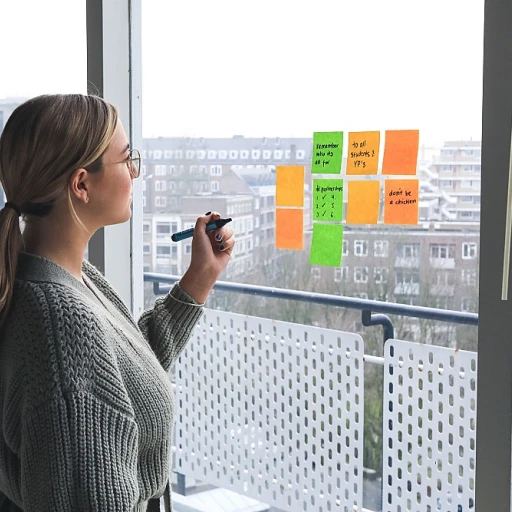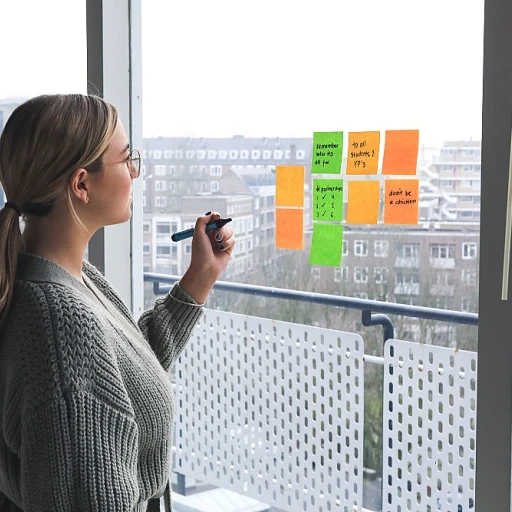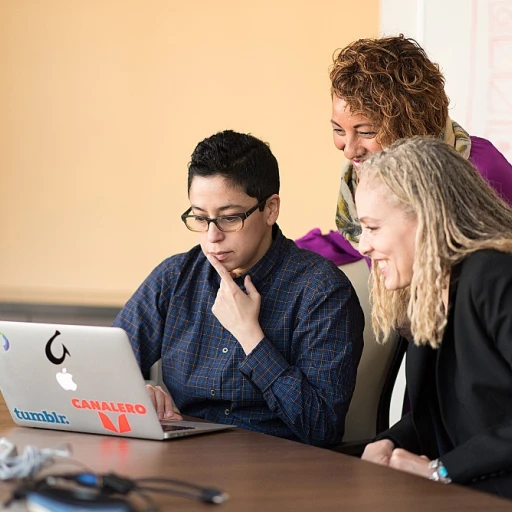Understanding the Role of Communication in HR
A Comprehensive Approach to Communication in HR
Effective human resources communication plays a pivotal role in the development and success of any organization. Employing a collaborative learning environment, HR communication is not just about passing information; it's about facilitating a culture where learning, development, and growth are embedded into the organization’s DNA. As professionals in the field, understanding the core elements of HR communication becomes crucial. Taking an in-depth look at communication’s role, it becomes evident that HR acts as a bridge-builder, ensuring that strategies align with the overarching goals of the organization. The emphasis is on promoting skills training and knowledge retention, which empower employees to evolve and adapt in their roles. Leveraging data within employee training programs can offer insights into the effectiveness of communication strategies. By analyzing learning experiences and feedback, HR can redefine approaches that cater to personalized learning and skill acquisition. This tailored education model not only enhances leadership capabilities but also supports decision making and problem solving, enabling teams to meet future challenges with confidence. Incorporating cutting edge technology such as virtual reality and mobile learning can transform the training development landscape. These platforms provide real-time solutions that adapt to the learners' needs, reinforcing knowledge through interactive and immersive experiences. Moreover, understanding the role of effective communication in talent management can further enhance an organization’s human capital. For a more comprehensive view on this, consider reading about the role of a talent coordinator in talent management. This exploration into the nuances of skill development can offer valuable insights for HR professionals looking to optimize their strategies.Leveraging Technology for Skill Enhancement
Embracing Technology for Enhanced Learning Experiences
In the evolving landscape of human resources, leveraging technology for skill enhancement is vital. The integration of technology in training development empowers both management and employees by offering innovative solutions. This approach facilitates real-time learning development and adaptive learning strategies. Technology enables more personalized learning paths for employee training, tailoring experiences to suit individual learner needs. Mobile learning, for instance, allows employees to access training programs and leadership development courses from any location, transforming traditional education structures and making learning more accessible. Additionally, collaborative learning platforms foster teamwork and problem solving by connecting employees across various departments. Learning paths crafted through technology also adapt to future work trends, equipping students and employees with the necessary skills to thrive. By focusing on leadership and decision making skills, companies can ensure that their teams are well-prepared for any challenges that arise. Coupled with feedback mechanisms, these tailored solutions are instrumental in enhancing knowledge retention and ensuring continuous improvement. One of the frontiers of cutting edge training technologies is virtual reality, which offers immersive learning experiences. By simulating real life scenarios, virtual reality can boost employee engagement during training sessions and enhance their ability to apply learned skills in their work environment efficiently. For further insights, explore some effective strategies to encourage job performance, which incorporate technology-empowered learning solutions in HR communications. By making data-driven decisions about training programs and learning strategies, organizations can ensure their workforce remains competitive and proficient.Personalized Learning Paths in HR Training
Creating Tailored Learning Journeys for Employees
In recent years, the personalization of learning in human resources training has become increasingly pivotal. The one-size-fits-all method of training is being replaced with more tailored strategies that accommodate the diverse learning needs and development goals of employees. Personalized learning paths enable HR departments to address the specific skills and competencies required for different roles within organizations. Innovative learning solutions rely on detailed data about employees’ existing knowledge and skills, allowing for the development of customized training programs that consider individual learning preferences and career aspirations. Through adaptive learning technologies and data-driven approaches, personalized experiences can be created to foster better employee engagement and effective skills training. Technological advancements such as virtual reality and mobile learning platforms empower employees to engage with training material at their own pace and in various contexts, providing flexible and accessible education resources. This adaptive learning approach not only supports knowledge retention but also enhances problem solving and decision making in real work environments. Real-time feedback and collaboration tools allow learners to reflect on their progress and identify areas for improvement, thereby encouraging continuous improvement. Students and employees alike benefit from these strategies, as personalized learning paths open doors to future-ready skills and leadership development. Leveraging these cutting-edge learning experiences, HR teams can drive meaningful work outcomes and support their organization’s objectives. Furthermore, the role of communication in HR extends beyond education, influencing how these approaches are integrated and adopted across teams. Explore how technology is transforming skill enhancement in HR through effective leadership goals, and ensure your team is prepared for the challenges of tomorrow's workforce. Crafting these tailored learning journeys fortifies every employee's role in the evolving landscape of business development.The Impact of Cross-Functional Training
Unraveling Multi-Department Synergies
In today's rapidly evolving work landscape, the power of cross-functional training is more pivotal than ever. Not only does it break down silos within an organization, but it also fosters a collaborative learning environment that has tangible benefits for both individual employees and the wider team. By exposing learners to different perspectives and challenges, employee development is significantly enhanced, facilitating a richer training development experience.
Cross-functional training, unlike traditional departmental education, encourages problem solving through diverse input, fostering innovation and creativity in training programs. Employees learn to approach challenges from various angles, leading to more robust solutions and enhancing decision making skills. This kind of skills training expands their knowledge base, empowering them to make informed choices that benefit the entire organization.
The embrace of technology in HR communication opens the door to cutting edge training methods, such as virtual reality and mobile learning. These strategies provide adaptive learning opportunities where real time feedback is possible. As employees navigate different scenarios and company functions, they gain insights that contribute to organizational leadership development.
Crucial to the success of cross-functional training is the alignment of learning paths with organizational goals. This ensures that the student or employee not only enhances their own skills but also contributes meaningfully to the company's objectives. With personalized learning, each participant can tailor their journey to meet specific requirements, ensuring not only knowledge retention but also a valuable, future-focused learning experience.
The feedback loop plays a vital role in this approach. It ensures continuous improvement and adaptation of strategies, reinforcing the importance of employee training for evolving work demands. As data from these efforts is analyzed, HR can make informed decisions, further guiding employees and empowering teams to reach their fullest potential.
Feedback Mechanisms for Continuous Improvement
Creating a Culture of Constructive Feedback for Growth
Effective feedback mechanisms are pivotal for continuous improvement within any organization. In the sphere of HR communication, establishing a robust feedback culture is critical for both individual and organizational growth. Feedback serves as an opportunity for employee training, development, and refinement of skills. To harness the full potential of feedback, it's essential to integrate it into everyday workflows. This can be achieved through various approaches:- Real-time feedback: Offering immediate feedback during or after tasks ensures that employees can promptly reflect and adjust their behaviors for better outcomes. This is especially relevant in virtual reality and mobile learning environments where learners benefit from instant corrections.
- Collaborative learning sessions: Involving teams in feedback sessions promotes a learning culture and encourages sharing of best practices. Collaborative settings often lead to innovative solutions and collective problem-solving, enhancing the skills training process.
- Data-driven insights: Leveraging technology to track performance and identify areas requiring improvement enables a more targeted approach to feedback. By utilizing data, leaders can provide specific, actionable feedback that fosters leadership development and empowers employees.
- Structured feedback programs: Establishing regular feedback sessions ensures consistency and demonstrates a commitment to employee development. Structured programs can also include adaptive learning strategies that customize suggestions based on individual learning paths.









